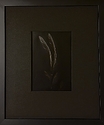I'm confused after acquiring some Soviet 9x12 glass plates from Ukraine, best before 1986, sheet film has its notches but how on earth to differentiate the emulsion side of a glass plate in the dark, there must be a simple answer?
- Home
- Forums
- Analog Workflow Forums (100% Analog/Traditional)
- Analog Equipment
- Plate Cameras and Accessories
You are using an out of date browser. It may not display this or other websites correctly.
You should upgrade or use an alternative browser.
You should upgrade or use an alternative browser.
Emulsion side?
-
A
- Thread starter Jojje
- Start date
Recent Classifieds
-
For Sale SL66 150mm Lens with Leaf Shutter--2025 CLA
- Started by RJSPHD55
-
For Sale Gitzo Series 4 Lever Ball Head GH4383LR
- Started by RJSPHD55
-
For Sale Gitzo GT5541LS Tripod in Outstanding Condition
- Started by RJSPHD55
-
For Trade View camera magazine back issues
- Started by MTGseattle
-
Want to Buy WTB Gossen Multibeam
- Started by Disconnekt
Forum statistics
rknewcomb
Subscriber
Touch your slightly moist bottom lip to the plate surface near an edge. The emulsion will give a SLIGHT TUG to your lib where the plain glass side will not..
You can also put a small red or green light source at some distance away, the objective being to create a spot of light across the room, not to light up your plate. Hold the plate so as to view the spot of light across the room as a reflection on the plates surface. The emulsion side will have a dull less sharp reflection.
You can also put a small red or green light source at some distance away, the objective being to create a spot of light across the room, not to light up your plate. Hold the plate so as to view the spot of light across the room as a reflection on the plates surface. The emulsion side will have a dull less sharp reflection.
J 3
Member
- Joined
- Feb 1, 2016
- Messages
- 147
- Format
- Medium Format
One other thing. Most glass dry plates with orthochromatic. You could actually load them with a safe light, making the difference in sheen visible. Some plates could use an amber safe light, and some required a deep red one. There were panchromatic plates that had to be loaded in full darkness too but they were not the norm.
As only one side is coated you can test with wet finger at an edge.
I tried that, no difference at all.
I just checked with some type 135 films at hand: it depends on type...
Nodda Duma
Member
If plates are packed two together (with little cardboard separators holding two plates at a time at the edges), the emulsion sides of the two plates will be facing each other.
If the plates are simply stacked in the box, then the emulsion sides will all be facing the same direction, so you can sacrifice one to get orientation correct and then feel the (very subtle) difference between glass side and emulsion side.
If the plates are simply stacked in the box, then the emulsion sides will all be facing the same direction, so you can sacrifice one to get orientation correct and then feel the (very subtle) difference between glass side and emulsion side.
They were stacked and wrapped, just like photographic paper - I thought that, too.If plates are packed two together (with little cardboard separators holding two plates at a time at the edges), the emulsion sides of the two plates will be facing each other.
If the plates are simply stacked in the box, then the emulsion sides will all be facing the same direction, so you can sacrifice one to get orientation correct and then feel the (very subtle) difference between glass side and emulsion side.
I've yet to expose the first one to find out sensitivity/fog levels.
| Photrio.com contains affiliate links to products. We may receive a commission for purchases made through these links. To read our full affiliate disclosure statement please click Here. |
PHOTRIO PARTNERS EQUALLY FUNDING OUR COMMUNITY:  |









